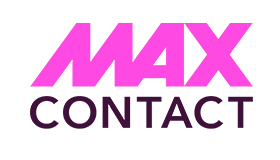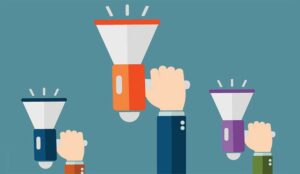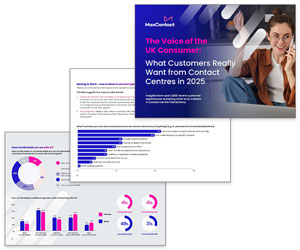In this line of work, it’s all about making contact. The more you interact with customers, the better your results will be. But how do you improve your ‘hit rate’ – the chances of your calls being answered (or emails replied to), and the likelihood of a positive interaction? For that, you need a strategy.
And the more insight you have to inform that strategy, the more likely it is to succeed.
What is a Customer Contact Strategy?
In short, a customer contact strategy is your plan for the best way to get in touch with customers or prospective customers. The better the plan, the more targets your agents will reach and the more positive those interactions will be.
How to Build a Good Contact Centre Strategy
Any good contact centre strategy starts with an objective. What do you want the outcome to be, and how will you measure success? From that you can work out the pertinent characteristics of the group or groups you want to contact.
Maybe your product or service will appeal to a certain age group, income level or geographic locality, for instance. In a debt collection scenario, you may want to prioritise customers who are in danger of falling into arrears, based on a previous history of late or missed payments.
The key is to start with insight, drawn from all available data. Then, as you collect data during a campaign, you can use it to refine your strategy further. As insight accumulates, your hit rate should increase, too.
Why Customer Insight Matters
This kind of data-driven insight matters because, without it, you’re effectively firing blind. Anybody on a contact list could conceivably want your product or service, but realistically only a percentage of them actually will.
So how do you get to the group you’re most interested in? Through insight. With debt collection, maybe their last two payments were late.
With sales and marketing, maybe they have hit an age and income level which increases the relevance of a particular purchase. Maybe a life change – retirement, relocation, a house purchase – have made them more likely customers.
Enhancing the Customer Experience
Insight can pin down important details that fine tune the customer experience, like when the best time to call might be, or whether a customer prefers to be contacted by another channel like text or email.
Data can give you these details, and also equip your agents with other useful information to enhance the customer experience.
Agents could start a conversation by asking about a previous purchase, for example. They can analyse previous points of contact to gain a better idea of a customer’s preferences or challenges.
Some of this was more straightforward before the pandemic, when most of us were at work during the daytime and the best time to call a landline was after 6pm in the evening.
That is no longer the case. More people are working from home, or working flexible hours, or combining office and remote working days. There are fewer hard and fast rules, making data gathering even more valuable.
The Power of Technology in Your Contact Strategy
As you’ve probably guessed, creating insight requires technology. Powerful analytics can sift large volumes of data for trends, patterns and nuggets of salient information. It can automate these processes so they happen instantly, without taking agents away from their primary task.
Turning Action into Data
Custom Data Fetching
Custom data fetching (CDF) lets you refine contact lists based on customisable rules. In short, the system will only present you with customers or leads that meet a set of criteria you determine in advance.
For example:
- Contact centres running a life insurance campaign may want to focus on prospects above a certain age.
- If sales teams are working in a certain area, they may want contact centre teams to prime leads in that locality and set up meetings.
- Debt collecting companies may only want to target customers whose outstanding balance is above a certain threshold.
- A utility business may want to focus a campaign on customers whose contracts are coming up for renewal.
In each case, CDF lets you select the customer or prospect groups you specifically want to target. It does so automatically and in moments.
CRM Integration
Data from your CRM platform can become part of your contact strategy. For example, calls and call backs can be set at the most convenient time for a customer, based on historic activity.
Digital Channels for Contact Preferences
Contact strategies should consider not just who and when, but also how. With an omnichannel solution, you can use data to determine the best way to contact a particular customer, based on historic preferences. They may answer emails more regularly than they answer calls, for example.
Making Data-Driven Decisions with Reporting and Monitoring Capabilities
What day of the week and what time of the day do you see greatest conversion success? Combine that with CDF demographic slices and you can create new contact models in minutes rather than days.
You can use dashboards and reports to measure customer demand and contact success rates and react dynamically in the moment, seizing every opportunity.
Much of this can be automated, so your contact strategy reacts to changes in near real time. For example, if you have an unexpected hike in call volume, your IVR can be updated to automatically offer a redirect to an alternative channel or a call back, meaning customers are not spending frustrating amounts of time waiting in call queues.
Talking of IVR, you can use data to refine these journeys, too. Which routes do customers prefer? Which ones lead to the most positive outcomes? Where do bottlenecks occur?
Gather and use this information to refine customer experience piece by piece, creating journeys that work for specific customer segments or specific campaigns.
A Data-Driven Contact Strategy is Essential
We all know that firing off calls at random is a fast track to failure. Your contact centre needs a contact strategy that is continually refined over time, and that can react to changes in circumstance as they happen.
Only technology can give you that advantage, by providing tools to gather and analyse data and act decisively and swiftly on the insight it provides.
This blog post has been re-published by kind permission of MaxContact – View the Original Article
For more information about MaxContact - visit the MaxContact Website
Call Centre Helper is not responsible for the content of these guest blog posts. The opinions expressed in this article are those of the author, and do not necessarily reflect those of Call Centre Helper.
Author: MaxContact
Published On: 13th Jul 2023
Read more about - Guest Blogs, MaxContact






 MaxContact is the AI-powered customer engagement software that helps you turn every customer conversation into a high-impact, revenue-driving moment. We empower your teams to connect smarter, perform better, and scale faster – without losing the human touch.
MaxContact is the AI-powered customer engagement software that helps you turn every customer conversation into a high-impact, revenue-driving moment. We empower your teams to connect smarter, perform better, and scale faster – without losing the human touch. 
































